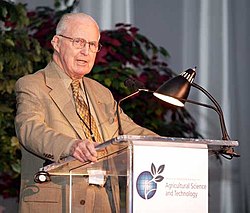| Agriculture |
|---|
 |
| |
Agricultural science (or agriscience for short [1] ) is a broad multidisciplinary field of biology that encompasses the parts of exact, natural, economic and social sciences that are used in the practice and understanding of agriculture. Professionals of the agricultural science are called agricultural scientists or agriculturists.
